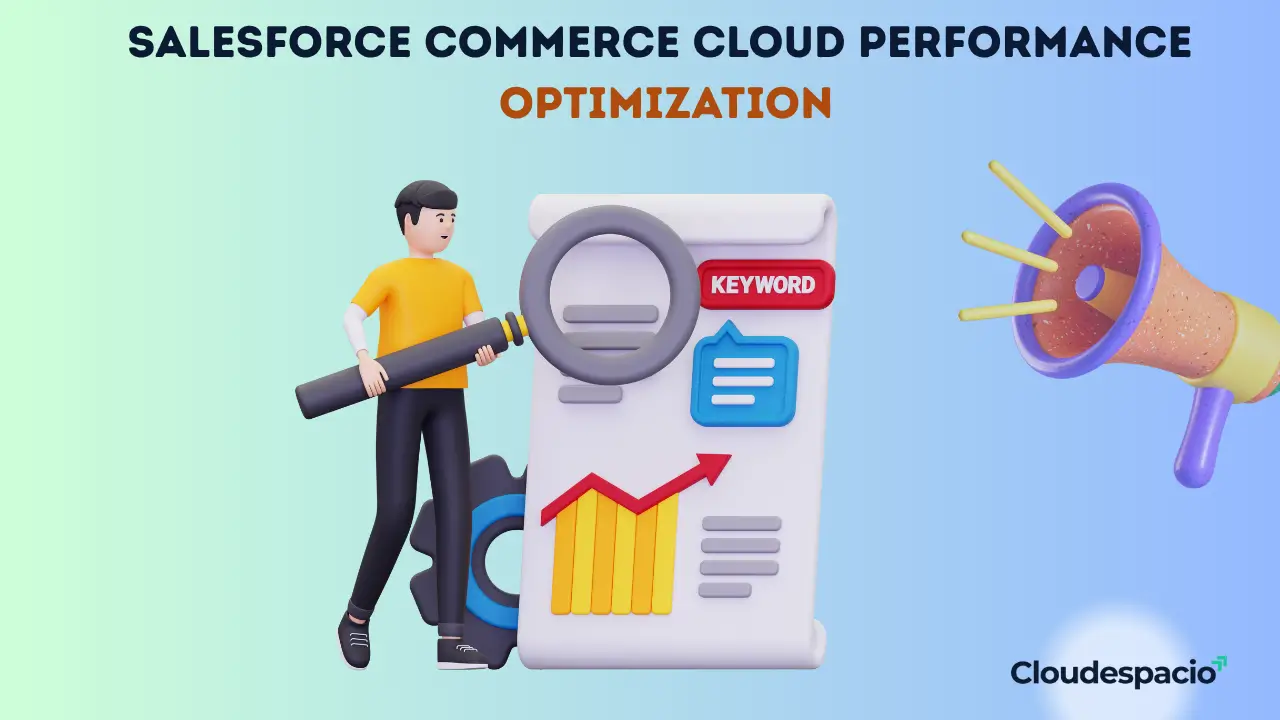


In e-commerce every millisecond counts, If your Salesforce Commerce Cloud website is even somewhat sluggish, it could be hurting your income, ranking, and customer retention. That’s why Salesforce Commerce Cloud performance enhancement is not optional but rather essential.
We at Cloudespacio focus on assisting companies to simplify and hasten their SFCC projects. Whether you’re using PWA Kit or working on SFRA, our goal is to enable you to unleash website speed, scalability, and improved customer experience without adding pointless complexity.
We will show you in this article how to boost Lightning JS performance, mend Core Web Vitals Commerce Cloud problems, improve SFCC page speed, and use wiser SFCC caching CDN plans. You will also know whether SFRA or PWA Kit fits your brand and how international companies are accelerating without compromising scale.
Under Armour, Breville, and Crocs among other worldwide brands utilize Salesforce Commerce Cloud (SFCC), an enterprise platform. But even the best built SFCC store can suffer if speed is not given top importance.
Bad load time reduces mobile conversions, raises bounce rates, and hurts search engine optimization ratings. Because of Google’s Core Web Vitals affecting search, your visibility and your sales are currently influenced by measures like Largest Contentful Paint (LCP) and Total Blocking Time (TBT).
Customers anticipate immediate experiences. On mobile, you are probably losing your pages before they even scroll if they load slower than 2.5 seconds.
Though SFCC has a strong framework, underperforming stores frequently result from:
Poor SFCC page speed, decreased TTI, and lower Core Web Vitals scores all result from these problems. Just better configuration and discipline can solve several of these problems without needing to change platforms.
Precise measurement is required before you enhance. Good teams apply a multi-tool approach:
Salesforce Profiler and Pipeline Debugger
Identify sluggish bespoke logic, memory consumption, and controller execution.
Google Lighthouse + DevTools
Measure TBT, CLS, and LCP. Simulate mobile users with throttling.
Core Web Vitals reports from Search Console
Follow how real users interact with your sites across browsers.
Third-Party Applications
Use Noibu to find problems with JS and UI performance and SpeedCurve for competitive benchmarks.
Benchmarking lets you pinpoint where anything is breaking: in code, server calls, templates, or front end rendering.

Enhancement of SFCC performance depends on wise, tiered improvements:
A significant TTI killer is unoptimized Lightning JS performance.
Performance bottlenecks are caused by too many dynamic calls.
To pass Core Web Vitals Commerce Cloud thresholds:
Salesforce presents two architectural approaches: SFRA and PWA Kit.
SFRA (Storefront Reference Architecture)
React-based headless storefront using PWA Kit
Genuine Comparison Indicators
Consider this 10-point checklist as your internal optimization baseline:
We have collaborated with several B2B and B2C customers to provide lightning-fast Salesforce Commerce Cloud storefronts at Cloudespacio. Deep platform experience and performance-first philosophy are combined by our technical staff.
Usually we assist as follows:
Best Methods for Salesforce Commerce Cloud Optimization improvement is not only technological. It’s a plan. Long-term development depends on improving SFCC page speed, Lightning JS performance, and reaching Core Web Vitals levels whether SFRA or PWA Kit is used.
Brands like Breville, Reitmans, and Crocs demonstrate that Commerce Cloud can be incredibly quick with the proper configuration. Only if you audit, tune, and test frequently, however.
Speed is ranking. Speed is trust. Speed is conversion.Optimize with Cloudespacio, millennia are generated by milliseconds.

Cloudespacio, headquartered in Singapore, is a prominent independent Salesforce and leading consulting firm, dedicated to prioritizing client satisfaction.
Copyright © 2025 All Rights Reserved. Designed by Navpatra.

If you have a project in mind, let’s talk!